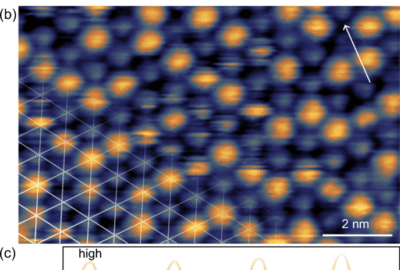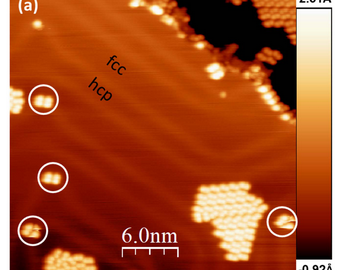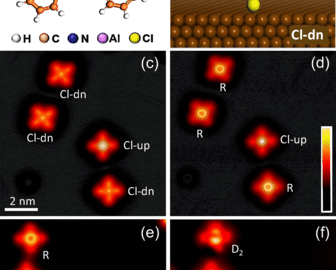publications
Redox-controlled conductance of polyoxometalate molecular junctions
We demonstrate the reversible in situ photoreduction of molecular junctions of a phosphomolybdate [PMo12O40]3− monolayer self-assembled on flat gold electrodes, connected by the tip of a conductive atomic force microscope. The conductance of the one electron reduced [PMo12O40]4− molecular junction is increased by ∼10, and this open-shell state is stable in the junction in air at room temperature. The analysis of a large current–voltage dataset by unsupervised machine learning and clustering algorithms reveals that the electron transport in the pristine phosphomolybdate junctions leads to symmetric current–voltage curves, controlled by the lowest unoccupied molecular orbital (LUMO) at 0.6–0.7 eV above the Fermi energy with ∼25% of the junctions having a better electronic coupling to the electrodes than the main part of the dataset. This analysis also shows that a small fraction (∼18% of the dataset) of the molecules is already reduced. The UV light in situ photoreduced phosphomolybdate junctions systematically feature slightly asymmetric current–voltage behaviors, which is ascribed to the electron transport mediated by the single occupied molecular orbital (SOMO) nearly at resonance with the Fermi energy of the electrodes and by a closely located single unoccupied molecular orbital (SUMO) at ∼0.3 eV above the SOMO with a weak electronic coupling to the electrodes (∼50% of the dataset) or at ∼0.4 eV but with a better electrode coupling (∼50% of the dataset). These results shed light on the electronic properties of reversible switchable redox polyoxometalates, a key point for potential applications in nanoelectronic devices.
Comments are closed








